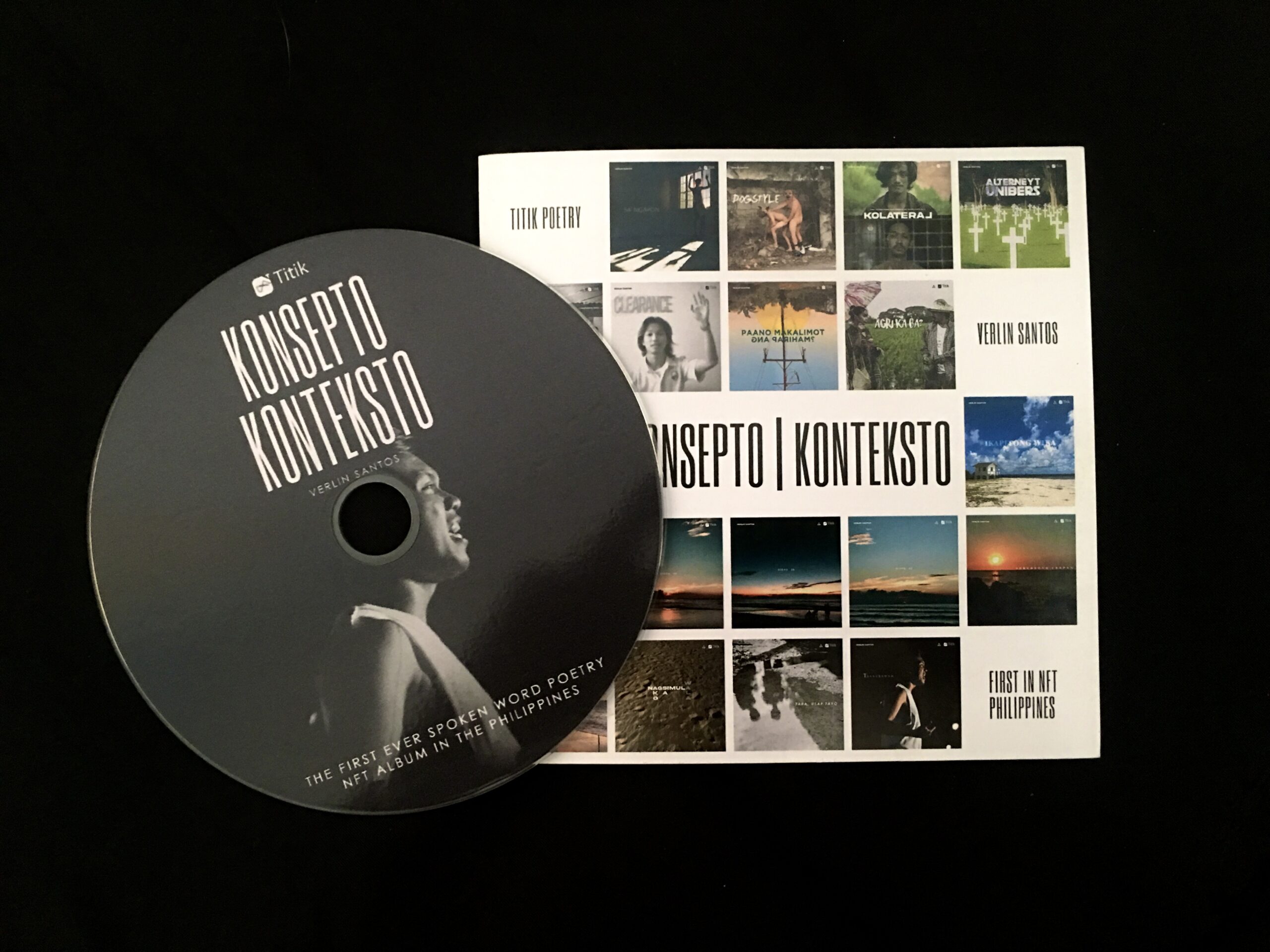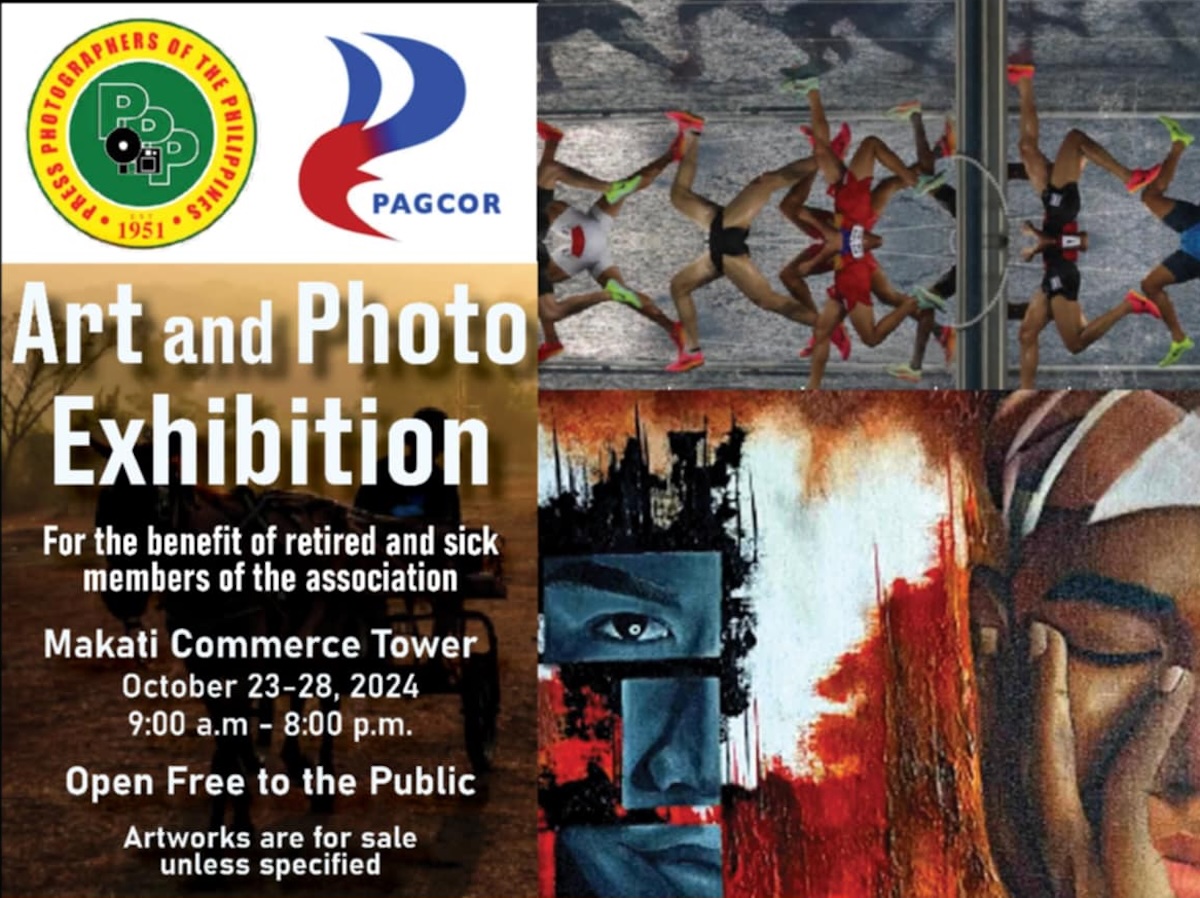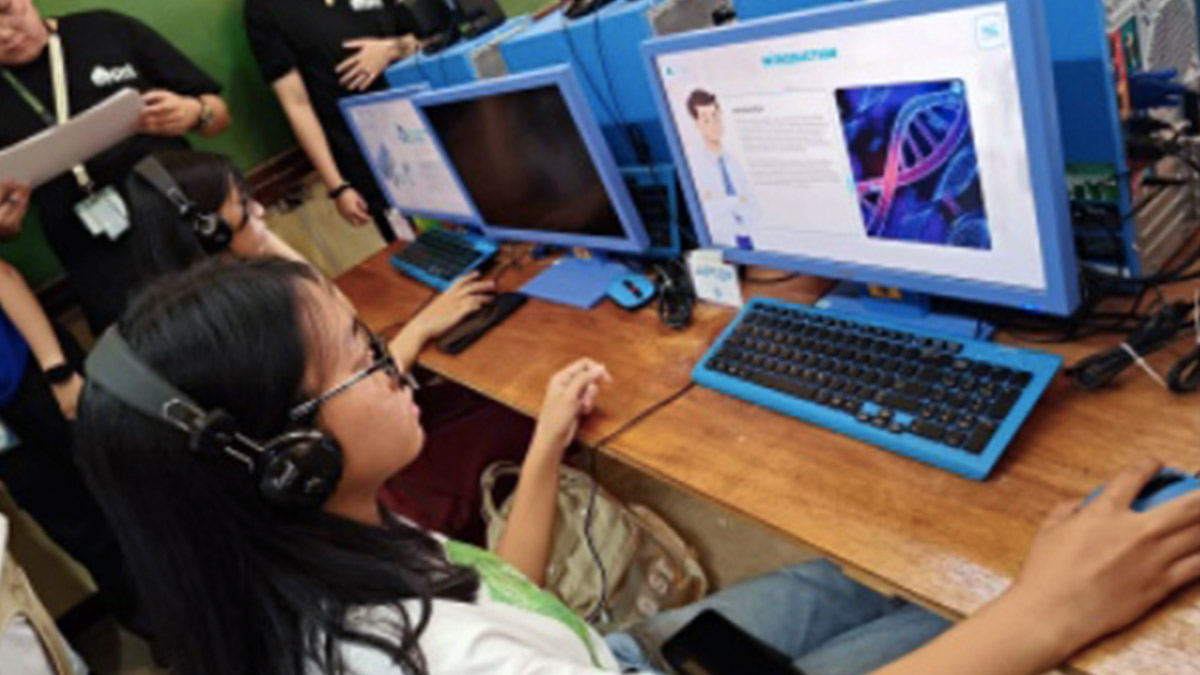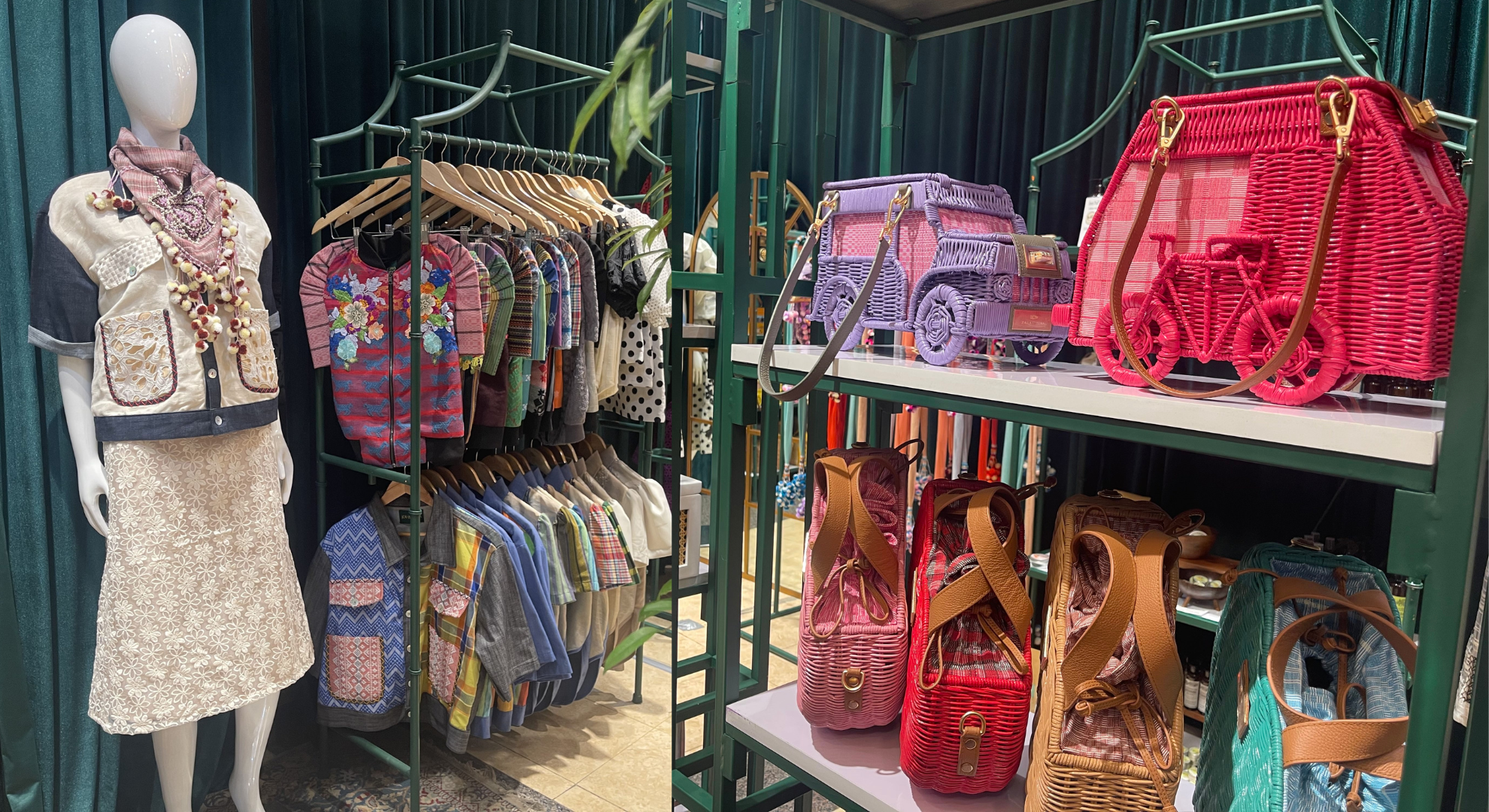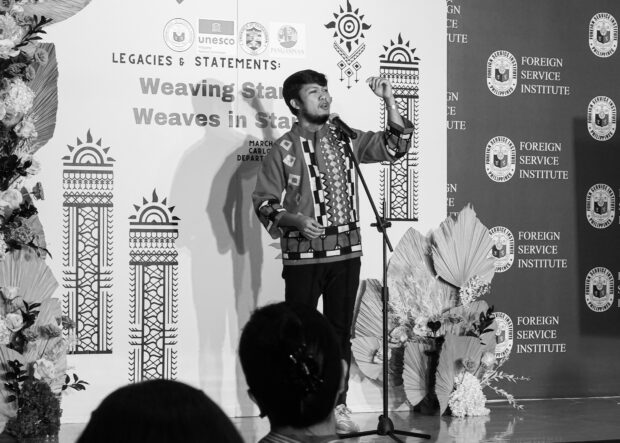
For all intents and purposes, NFTs have divided the world; one side falling head over heels for the potential profits this newfound technology brings, and the other, baffled by the obscene value placed on uninspired images of apes—I’d say any hate is mostly directed to the fanatics who dare equate ownership of such works with let’s say, owning a valuable piece of art from a gallery. Nevertheless, despite its relatively tarnished reputation, John Verlin Santos, a spoken word poetry artist, believes that NFTs can be beneficial to other artists such as himself.
Describing himself as a performance poet, writer, photographer, filmmaker, graphic artist, editor, teacher, freelance artist, motivational speaker, and peace advocate (quite the renaissance man), Santos graduated with a degree in BA Journalism from Cavite State University. In 2015, he founded Titik Poetry, an art collective based in Cavite that is recognized by various governmental institutions such as the National Commission for Culture and the Arts, and the National Youth Commission.
“In 2015, I embarked on my spoken word journey by attending open mic nights at Sevs Cafe in Manila. However, due to the distance and the cost of transportation, I decided to organize my own event in Cavite. The event’s success garnered inquiries about the next one and how to participate, which sparked an idea in me to establish a group that eventually became a close-knit family,” shares Santos.
“Over the years, Titik Poetry has evolved and discovered its purpose. Our mantra goes beyond using art solely for entertainment, but also as a powerful platform for education.”
In January 2022, he launched an album titled Konsepto | Konteksto; it contains 18 pieces; it is the first spoken word poetry album as NFT in the Philippines.
NFTs and Spoken Word Poetry, An Odd Combination
Just as images of intoxicated animals, videos, and even the first tweet of Jack Dorsey can be NFTs, I guess even a spoken word poetry album is nowhere near being considered the most absurd NFT on the list. Santos developed the idea after a performance at a Twitter spaces event for Filipinos involved in NFTs and crypto art. After the event, he was approached by those present and he was asked if he could mint his poem so that they could support him through collecting. “This was a defining moment for me, as it enlightened me and made me realize that literary works could be sold as NFTs, though no one was doing so at the time,” he explains.
As NFTs refer to the kind of certificate of ownership tied to any digital asset, it only makes sense that even an auditory literary work can be made into one; after all, it’s the proof of purchase that matters. The phenomenon has been around for a while but even now it can still be a bit confusing, Santos explains, “For those unfamiliar with NFTs, the easiest way to comprehend them is to liken them to social media posts. To mint refers to uploading. The only difference with NFTs is that there is an opportunity to sell and earn money.”
Further nuancing the very act of selling art, believing that using traditional means or any modern technological avenues are one and the same, the difference being only the approach, he shares, “Selling literary works as NFTs is akin to selling digital or visual art of any kind. At the end of the day, the creator’s challenge remains the same: how can they effectively sell their art? How can the creator give value to their artwork and to their community?”
Empowering Artists Through NFTs
To put it plainly, artists are also driven by the prospect of a profit—sure their passion for their craft drives them, but these two are not mutually exclusive; you can be motivated in preparing for your project while seeking to earn from it; this is a livelihood for some. Guaranteeing a profit is the way in which they are enabled to continuously express themselves through their art without constantly worrying about securing the daily necessities. Santos further explains the monetary benefit of NFTs for artists:
“There are no third-party intermediaries who receive a cut of sales, nor is it necessary to accumulate a certain number of watch hours or stream hours to earn money. Transactions occur directly between the creator and the collector or, better yet, the artist and the supporter.”
And speaking of stream hours, streaming giant Twitch is known for its 50-50 revenue split from subscriptions. Fellow competitor YouTube Gaming on the other hand operates with a 70-30 split—still, that is a huge amount that is taken, and this extends to other platforms including even that of Spotify. Sure from a larger perspective, for bigger and more established creators, such a pay cut may not even mean much, but the same cannot be said for smaller ones.
All of the NFTs on @VikingofficiaI’s page were plagiarized from @siberi2‘s portfolio on Behance.
These images, ironically, were created for a different “NFT-based gambling” project. But minting artwork as an NFT does not prevent it from being copied and resold, so here we are. pic.twitter.com/O5WtDI67L6— NFT thefts (@NFTtheft) July 21, 2022
Nevertheless, all benefits aside, NFTs have gotten quite a negative reputation that has prevented investors from exploring the emerging market and discouraged creators from placing their work on the platform. One of these is the preconceived notion that these are scams. Santos acknowledges previous unfortunate events in which the work of other artists was stolen and presented as its own different product:
“‘Is that a scam?’ This is a common question that arises when it comes to selling art as NFTs. However, it is important to note that the only time it becomes a scam is when an artist is hired for a commission and is not paid for the project. So, how can artists, especially small-time ones, avoid scams and benefit from this emerging market?”
“One option is to create your own project or collection. While it may require significant effort and explanation, the main point is that you can earn while creating art. The key difference is that all the work, from creating the art to selling it, is entirely yours. Additionally, having a supportive community is critical when venturing into the world of NFT art. Collaborating with other artists or developers can be helpful in building a solid foundation.”
“In my case, I had the opportunity to materialize a project together with my good friend, Rey Alejandro, called Tezos Filipinos. This project aims to raise awareness by contributing to the digital footprint of the Philippine language, history, arts, and culture in the metaverse.”

The Bottomline
In the end, there is still much to learn and discover about the emerging platform, and the very idea of crypto art, cryptocurrency, NFTs, and everything in between; after all, it’s new and unfamiliar territory. But despite that, a trailblazer in his own right, there is much to appreciate from Santos’ efforts in showcasing what this brand-new approach to selling art can do for independent artists.
“With my album, I decided not to release it on streaming platforms right away. Instead, I made it exclusive to collectors on Web3. In order to obtain a physical copy of the album, the collector must acquire all 18 spoken word pieces. However, this begs the question: why would someone buy it if they can listen to it for free? To address this, I created a collector’s badge that comes with several perks that can be used in the physical world. With my collector’s approval and support, the album can also be heard on Spotify, Apple Music, and other streaming platforms.”
And despite the difference in approach, one we can’t for certain say we’ve ever seen before; it all goes back to a statement he shared earlier—when you get down to it, it’s not really that foreign after all, it all comes down to seeking marketability.
“At the end of the day, the creator’s challenge remains the same: how can they effectively sell their art? How can the creator give value to their artwork and to their community?”
That being said, based on Santos’ own experience, there is a caveat. You can’t simply jump to creating NFTs without a community ready to support you. And not just any community, instead one that is willing and capable to deal in that platform. It’s a matter of recognizing your own supporters—it wouldn’t be wise for an artist with a stable level of support from those who prefer on-hand purchases to suddenly switch to NFTs.
As they say, art is in the eye of the beholder, and for as long as there’s always someone willing to support and purchase, and an artist that cares about the work they are putting out in the world, then there can hardly be anything negative that anyone can say about NFTs; it can truly flourish to become a legitimate avenue that smaller artists can rely on.
—
You can view some of John Verlin Santos’ works on his website at verlinsantos.webflow.io, or follow him on Twitter: @TitikAtSigya, and Instagram: @verlin_santos
Images courtesy of John Verlin Santos

